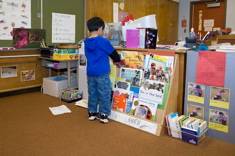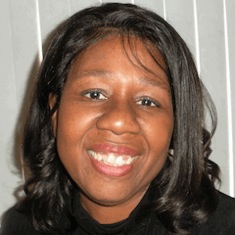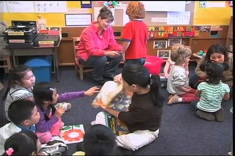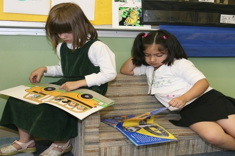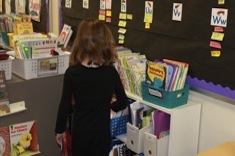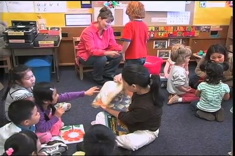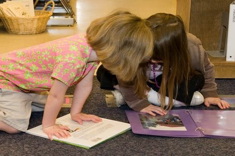“Why isn’t there an African American Henry and Mudge?” asked a teacher in the audience of a session on multicultural children’s literature. I reminded her of a previous slide stating that only .03% of all of children’s books published during the previous year featured African Americans. She retorted, “Well, at least 50 of them should have been the ‘Henry-and-Mudge-Frog-and-Toad’ kind of books. Children who are just starting to read need to have books about their own kind of experiences.”
I completely agreed with her. I spent the following weeks searching the Internet and combing through the beginning books sections of bookstores and libraries. I was confident that there were many beginner readers featuring multicultural characters out there. All I had to do was unearth them, make a list, and distribute that list to all of the kindergarten to second grade teachers and literacy coaches that I know.
Beginner readers are a special genre of books. When children acquire a sight word vocabulary, these books offer them the opportunity to read for an extended period of time. If they become captivated by Henry and Mudge, there are more than 35 books to devour. Unlike the 8-16 pages that children encounter when they read “little books,” beginner readers are up to 70 pages long. The extra length is critical because we all know that the more children read, the better they’ll get at reading. Publishers of beginning readers hold authors to a rigid formula of words per sentence, syllables per word, and sentences per page. Those formulas have the potential to result in awkward “basalese”-sounding language and stilted mindless stories. However, gifted authors such as Cynthia Rylant, Arnold Lobel, Kate DiCamillo, and Else Minarik are able to operate within those parameters and still create enchanting stories.
One of the first places that I looked was the Theodor Seuss Geisel Book Awards. It is a relatively recent addition to the American Library Association book award program. The award is given annually to the most distinguished American book for beginning readers. Three to four honor books are also recognized. I am happy to report that one of the Theodor Seuss Geisel Award honor books is Jazz Baby. It features an African American family singing, dancing, clapping and snapping. The book has infectious, rhythmic language that all children are sure to love. While this book does not fit the standard format (size, number of pages) of a “beginning reader,” any teacher who is looking to build his/her collection of multicultural beginning readers will want to be sure to get this one.
Next, I looked at the major publishers of beginner readers. Almost every publisher of children’s books has a beginning readers line. I examined the well known lines including “I Can Read” (Harper-Collins), “Step into Reading” (Random House), “Ready to Read” (Simon & Schuster), “Hello Reader” (Scholastic Books) and “All Aboard Reading” (Grosset & Dunlap). I found that many of the books featuring diverse characters were biographies, history, and historical fiction — books such as Wagon Wheels, The Drinking Gourd
, and Sitting Bull
. These books were classified as levels three and four — the very highest levels for this genre, with grade level equivalents up to fourth grade. I have seen teachers use these books with guided reading groups. I have also seen intermediate teachers use them to support content area instruction with students who had difficulty reading grade level content area texts. What I haven’t seen is a second grader snuggled into a bean bag chair reading one of these books during D.E.A.R. time.
I found numerous books with media tie-ins. I have never been a fan of media tie-in books. However, if my beginning reader student loves a particular character, I’m willing to drive all over town to find the books for him or her. Simon & Schuster’s Ready-to-Read Books wins the prize for the largest collection of media tie-in books. They offer beginner reader books featuring characters from many of the Disney animated movies. So, for example, your beginning readers can enjoy books about Jasmine from Aladdin and Lilo from Lilo and Stitch. There is an unbelievably large collection of 25 books featuring Dora the Explorer and Diego! That’s almost as many as the Henry and Mudge books.
There were a number of books that feature an ensemble cast of characters. The diverse characters are part of a class, group, or club. Usually, there is only one child from a diverse culture. There is Anna from the Welcome to First Grade series by Miriam Cohen, Ayanna from the Robin Hill School series by Margaret McNamara, and Ollie from The Best in Second Grade series by Katharine Kenah. The “ensemble cast books” portray typical mainstream, middle-class childhood experiences. Rudine Sims Bishop would categorize them as “culturally generic” stories. I suspect that an editor insisted upon a character from a diverse culture in the spirit of inclusion, or perhaps even political correctness.
Second grade teacher Martha Polley struck gold in a classroom library that she inherited from a retired teacher — an entire set of Just for You! books. Scholastic publishes this series of books, consisting of 24 beginning readers featuring all African American characters. The books are written by renowned African American children’s book authors such Irene Smalls, Nikki Giovanni, Nikki Grimes, and Angela Shelf Medearis.
It was a challenge to get my hands on some of the actual books. Many of the books that I found in the library were out of print, so teachers couldn’t buy them if they wanted them. There were also a number of titles that were on a publisher’s website but couldn’t be located at the public library or bookstores. I ended up having to buy some of them from Amazon. I’d really prefer to read a book before I plunk down my hard-earned cash for a copy. Accessibility proved to be a real issue. If books take a lot of effort to hunt down, chances are not very good that they will up end in classroom libraries and, most importantly, in the hands of beginning readers.
Finally, there is the issue of diversity within multicultural books. Most of the books featured African Americans. Dora the Explorer and Diego made up most of the books featuring Latinos. The only books that I found featuring Asian characters depicted them using outdated and unacceptable stereotypes. There were also some Asian characters in the “ensemble cast” books. The big find of this inquiry was the Just for You! books by Scholastic — thanks, Martha! I hope that other publishers follow Scholastic’s lead and include a line of multicultural beginner reader books in their collections.
Here is a limited list of books to get you started on building your collection. I enjoyed reading them and hope that you enjoy them, too.
Jane O’Connor’s Molly the Brave and Me. Random House. Molly is fearless. She isn’t afraid of bugs and takes the boys’ teasing in her stride. Her friend, Beth, admires Molly’s courage but soon learns that she, too, can be brave.
Elaine Marie Alphin’s A Bear for Miguel. Harper Collins. Maria goes the market with her family to get needed supplies. They must trade some of their possessions and handmade goods for food and other necessities. Maria finds that she is able to help her family by making a big personal sacrifice.
Anastasia Suen’s The Loose Tooth. Puffin. It’s picture day at school and Peter’s tooth is loose. Will it stay in place until the class picture has been taken? This book features the characters from the Ezra Jack Keats books from the 1960’s and ’70’s. Other titles available include The Clubhouse
, The Hamster Chase
, and Willie’s Birthday
.
Mel Cebulash’s Willie’s Wonderful Pet. Scholastic. Willie’s school is having a pet day. Unfortunately, Willie doesn’t have a pet. He finds a clever solution that allows him to participate.
Nikki Grimes’s Wild, Wild Hair. Scholastic. Tisa hates Monday morning. That is when her mother braids her long, thick hair. Every African American girl who has ever gotten her hair braided can relate to this story.
Carmen T. Bernier-Grand’s Juan Bobo: Four Folktales from Puerto Rico. Harper Trophy. Juan Bobo is a “noodle head” character from Puerto Rican folklore. He takes things literally — like Amelia Bedelia. Children who grew up hearing those stories told will get a real kick out of reading them.

